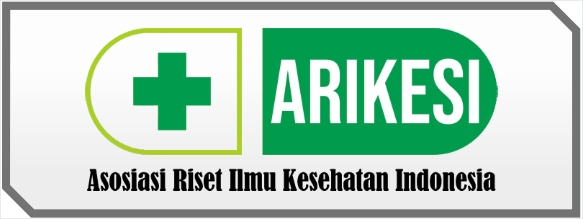Basalioma
DOI:
https://doi.org/10.59581/diagnosa-widyakarya.v2i1.2514Keywords:
Basalioma, Ultraviolet Light, ElderlyAbstract
Basalioma, also known as basal cell carcinoma (BCC), is the most common skin malignancy found throughout the world. Basaliomas commonly occur in the elderly population, which is associated with cumulative sun exposure and other exogenous damage. Older (65–79 years) to very old (>80 years) white individuals showed the highest increase in basalioma incidence rates. In Indonesia, data from the Cancer Registration Agency in 2009 shows that skin cancer ranks 4th out of the 10 most common types of cancer. The most common location is in the nose area. The incidence of metastasis is 0.01-0.1%, and occurs lymphogenously and hematogenously. The most significant causes are exposure to ultraviolet radiation and genetic predisposition. Basaliomas tend to occur in areas of chronic sun exposure and therefore the majority, about 74%, occur on the head, face and neck. Basaliomas usually arise from the lowest layers of the epidermis, although a small number may originate from the outer root sheath of the pilosebaceous unit. The incidence of basalioma is directly proportional to age and inversely proportional to the amount of melanin pigment in the epidermis. Surgery remains the first line of treatment for this disease. Surgical modalities include electrodessication, curettage, excision, cryosurgery, and Mohs micrographic surgery..
References
Kasumagic-Halilovic E, Hasic M, Ovcina-Kurtovic N. A Clinical Study of Basal Cell Carcinoma. Med Arch (Sarajevo, Bosnia Herzegovina). 2019;73(6):394–8.
Fania L, Didona D, Morese R, Campana I, Coco V, Di Pietro FR, et al. Basal cell carcinoma: From pathophysiology to novel therapeutic approaches. Biomedicines. 2020;8(11):1–38.
Dika E, Scarfì F, Ferracin M, Broseghini E, Marcelli E, Bortolani B, et al. Basal cell carcinoma: A comprehensive review. Int J Mol Sci. 2020;21(15):1–11.
Lanoue J, Goldenberg G. Basal cell carcinoma: A comprehensive review of existing and emerging nonsurgical therapies. Journal of Clinical and Aesthetic Dermatology. 2016.
TAN ST, GHAZNAWIE M, REGINATA G. Deteksi Dini Karsinoma Sel Basal. Indones J Cancer. 2016;10(2):61.
Chattopadhyay A, Chatterjee A, Hussain M, Kanti Santra T, Arif Hossain M. Basal Cell Carcinoma of the Face - a Rare Case Report. Int J Adv Res. 2020;8(7):298–301.
Drucker AM, Adam GP, Rofeberg V, Gazula A, Smith B, Moustafa F, et al. Treatments of primary basal cell carcinoma of the skin: A systematic review and network meta-analysis. Ann Intern Med. 2018;169(7):456–66.
Dourmishev L, Rusinova D, Botev I. Clinical variants, stages, and management of basal cell carcinoma. Indian Dermatol Online J. 2013;4(1):12.
Kamath P, Darwin E, Arora H, Nouri K. A Review on Imiquimod Therapy and Discussion on Optimal Management of Basal Cell Carcinomas. Clinical Drug Investigation. 2018.
Dallaglio K, Marconi A, Pincelli C. Survivin: A dual player in healthy and diseased skin. Journal of Investigative Dermatology. 2012.
Tilli CMLJ, Van Steensel MAM, Krekels GAM, Neumann HAM, Ramaekers FCS. Molecular aetiology and pathogenesis of basal cell carcinoma. Br J Dermatol. 2005;152(6):1108–24.
Tanese K. Diagnosis and management of basal cell carcinoma. Curr Treat Options Oncol. 2019;20(2).













